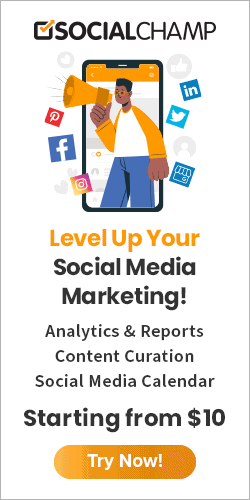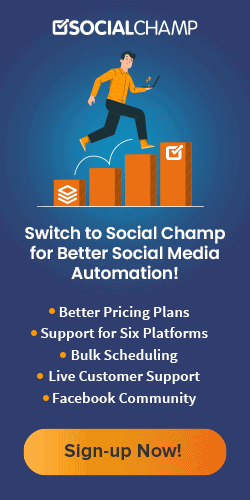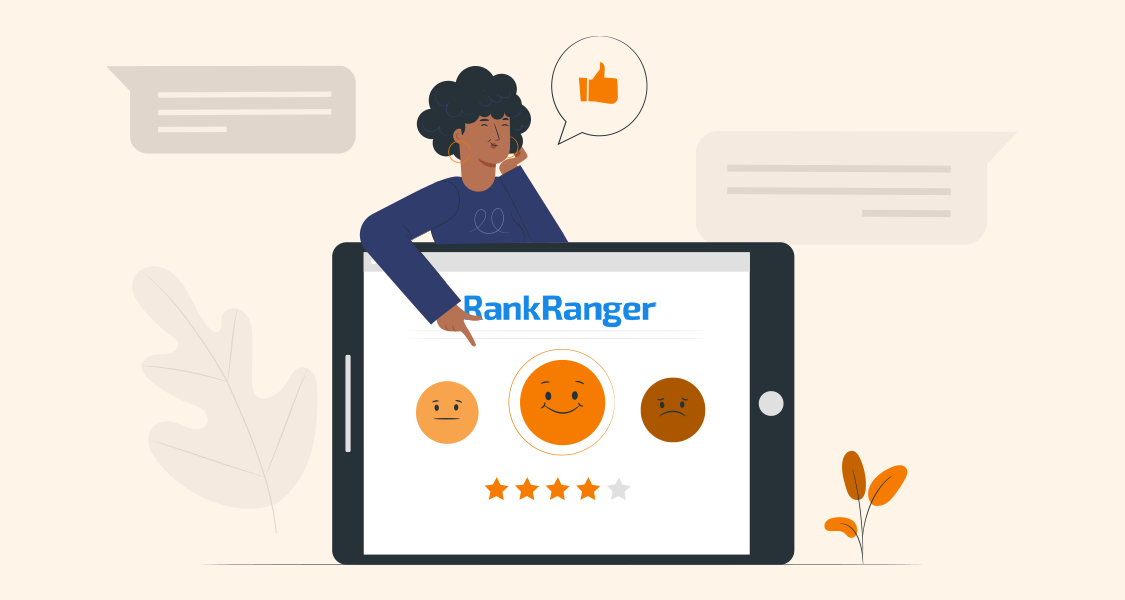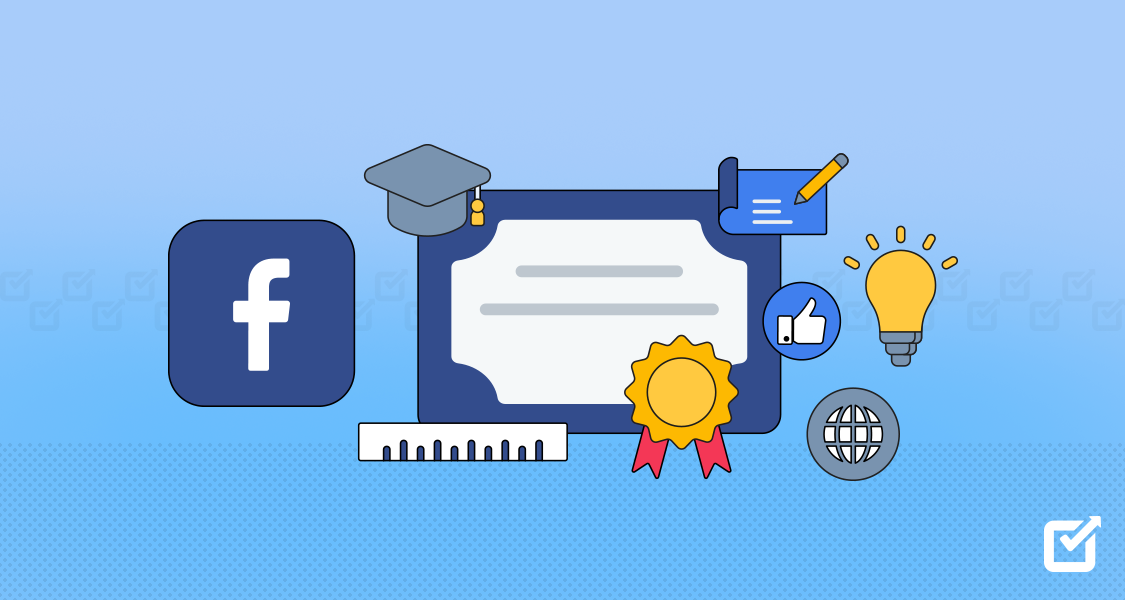Forget the days of settling for whatever’s on the shelf and somewhat customer expectations have changed, of course, and for all the right reasons. Today, it’s all about finding that perfect item that feels tailor-made just for them.
In fact, a staggering 73% of customers expect companies to go the extra mile and truly understand their unique preferences and needs. They want brands to get them (I mean really get them) and present them with perfect items that speak to their souls.
That’s where the marketing funnel steps in. It helps businesses decode customer behavior and preferences intricacies, showing them exactly what their ideal customers seek.
So, suppose you’re a business looking to win over today’s savvy customers. In that case, it’s time to embrace the power of the marketing funnel and show potential customers that you truly understand what they’re looking for. And if your social media marketing is part of your overall marketing strategy, a social media management tool will come really handy when guiding these customers through the marketing funnel.
What Is a Marketing Funnel?
A marketing funnel is a conceptual framework that illustrates the various stages potential customers go through before purchasing.
It is structured as a funnel to represent the gradual narrowing of prospects as they progress from initial awareness to becoming paying customers.
The Stages of the Marketing Funnel
Marketing funnel stages can vary depending on the model chosen, as businesses tailor their funnels to meet their specific requirements. This customization is particularly evident when comparing the customer journeys in business-to-business (B2B) and business-to-consumer (B2C) contexts, which often follow distinct patterns.
Nevertheless, the marketing funnel typically comprises several stages describing potential customers’ progression from initial awareness to eventual conversion. These four key stages are:
Awareness
This stage marks the beginning of the customer journey, where individuals become aware of a product, service, or brand. This stage is pivotal as it is the initial point of contact between the business and its potential customers.
Strategies at this stage may include advertising, content marketing, social media marketing, and search engine optimization (SEO). The goal is to generate initial interest and familiarity with your offering.
Interest
After laying the groundwork with brand awareness, the next critical phase in the customer journey is the Interest stage. Here, businesses aim to transition from merely grabbing attention to actively engaging and intriguing potential customers.
Think of it as inviting someone into your world and showing them around. You’ve caught their eye, and now it’s time to give them a closer look at what you have to offer. This stage is all about providing additional information, insights, and experiences that deepen their curiosity and interest in your product or service.
Desire
Potential customers have moved beyond initial interest and are considering your offering to meet their needs or desires. They may express interest in a product demo, request a quote, or sign up for a free trial.
For businesses, this stage is about creating desire and convincing customers that their offering is the best solution to meet or fulfill their needs. In addition to emphasizing your unique selling points, you can offer limited-time promotions, exclusive deals, or special incentives to create a sense of urgency and encourage immediate action.
Action
The ultimate goal of the digital marketing funnel is to prompt action from your audience, whether it’s making a purchase, signing up for a service, or taking another desired action. All your efforts culminate in this stage, and you want to make it as easy and compelling as possible for prospects to convert.
Clear call-to-action, streamlined purchase processes, personalized offers, and effective follow-up strategies are essential elements in encouraging prospects to become customers.
In addition to the four traditional stages of the AIDA model, the marketing funnel can further progress to encompass two additional stages: retention and advocacy.
Retention
Beyond the initial conversion, the retention stage focuses on nurturing customer relationships and encouraging repeat business. This involves delivering exceptional customer service, providing ongoing value, and fostering loyalty through loyalty programs, exclusive offers, or personalized communication.
Advocacy
The advocacy stage entails turning satisfied customers into brand advocates who actively promote the business to others. Advocates may share positive reviews, refer friends and family, or engage with the brand on social media. You can leverage this advocacy to amplify your reach and attract new customers through word of mouth.
Related Article: Social Media Brand Advocacy: The Why and The How
Top of the Funnel Marketing
Top-of-the-funnel (TOFU) marketing refers to the initial marketing funnel stage. This is where you focus on generating awareness and capturing the attention of potential customers who may not yet be familiar with your brand, product, or service.
TOFU marketing strategies aim to cast a wide net and attract a broad audience, nurturing them into leads that can eventually progress through the funnel. You can employ several key strategies in the top of the funnel marketing, which include:
Content Marketing
Content marketing involves creating and distributing valuable, relevant, and consistent content to attract and engage a target audience. The goal is to provide information, insights, or entertainment that aligns with potential customers’ interests and needs.
For instance, you can create blog posts that address common questions, challenges, or pain points your target audience faces. Also, produce informative videos that showcase your products, services, or industry knowledge in an engaging and visually appealing format.
Additionally, you can offer downloadable resources such as e-books, whitepapers, guides, or templates that provide in-depth information about your product.
Related Article: 13+ Best Content Marketing Tools for Businesses in 2025
Social Media Marketing
According to research, 54% of internet users use social media platforms to research products. This statistic proves that social media platforms are not merely avenues for social interaction but vital channels for consumers to discover and learn about brands and products.
Therefore, incorporating robust social media marketing strategies during TOFU marketing is essential to capture potential customers’ attention effectively. Here’s an example of a company that implemented TOFU marketing via Instagram:
The above social media post is meant to help their target audience familiarize themselves with the team behind the company.
When crafting your social media posts, consider sharing engaging content that sparks conversations and encourages interaction. You should also utilize a mix of visuals, videos, infographics, polls, and interactive content to keep your audience engaged and interested in your brand.
Unleash the Full Potential of Your Social Media Presence!
With Social Champ, you can schedule posts, analyze their performance, and streamline your social media management like a pro.
Search Engine Optimization (SEO)
Search Engine Optimization (SEO) is crucial in top-of-the-funnel (TOFU) marketing. It helps improve your website’s visibility in search engine results pages (SERPs), making it more likely that users who are searching for relevant keywords or topics will see your content.
There are several ways to implement SEO for TOFU marketing. Firstly, you can conduct keyword research to identify relevant keywords and topics that your target audience frequently searches for.
You can use tools like Google Keyword Planner, SEMrush, or Ahrefs to discover keywords with high search volume and low competition.
In addition to conducting keyword research, optimize on-page elements, such as page titles, meta descriptions, headings, and image alt text. Build quality backlinks from authoritative and relevant websites.
Since 51% of customers use mobile devices to discover new brands and products, you should ensure that your website is optimized for mobile devices and provides a seamless user experience across all devices.
Paid Advertising
Paid advertising is a powerful tool in TOFU marketing for attracting potential customers’ attention. It involves paying for ad placements on various online platforms to promote products, services, or brands. These ads typically appear in designated areas of websites, search engine results pages, social media feeds, or other digital channels.
Unlike organic marketing efforts, which can take time to yield results, paid advertising offers immediate visibility and impact. You can launch ad campaigns and start seeing results almost instantly, making it an ideal strategy for quickly capturing the attention of potential customers during the TOFU stage.
Email Marketing
This marketing strategy involves sending targeted and personalized emails to a group of subscribers or contacts. It’s crucial for TOFU marketing as it can allow you to introduce yourself to potential customers and build awareness around your brand, products, or services.
For instance, you can share valuable insights, tips, or resources through email newsletters or drip campaigns to position yourself as a trusted advisor and establish credibility with potential customers. You can also include compelling calls-to-action (CTAs) and relevant links in your emails or encourage subscribers to visit your website, explore your content, and engage with your brand further.
Influencer Marketing
A survey by Edelman found that 63% of consumers trust influencers’ opinions about brands more than what brands say about themselves. This statistic highlights the relevance of influencer marketing in letting customers discover your brand during the TOFU stage.
To leverage influencer marketing at this stage, identify influencers who align with your brand values, target audience, and marketing objectives. Look for influencers whose content resonates with your brand’s messaging and aesthetic and who have a significant following and engagement rate within your target demographic.
An example of a company that leverages influencer marketing is Cocacola. See below:
In this paid partnership, Cocacola chose Gigi Hadid for their TOFU campaign since she’s quite popular among the younger demographic that predominantly uses Instagram.
Related Article: How to Craft a Successful Influencer Marketing Strategy 2025
Middle of the Funnel Marketing
Middle-of-the-funnel (MOFU) marketing is where the magic really starts to happen. At this stage, potential customers have moved beyond the initial awareness phase and are actively considering their options.
Here’s how you can tailor your marketing efforts to nurture these leads and guide them closer to making a purchasing decision:
Craft Educational Content
Now that prospects know your brand, it’s time to dive deeper into providing valuable, educational content that addresses their specific needs and pain points. This could include in-depth guides, case studies, product demos, or webinars showcasing how your offerings can solve or fulfill their problems.
Conduct Email Drip Campaigns
This is where you conduct email campaigns that deliver relevant content to prospects based on their interests and behavior. By segmenting your audience and sending personalized messages, you can keep leads engaged and gradually move them through the marketing funnel.
Set Up Lead Nurturing Workflows
You can also set up automated lead nurturing workflows that guide prospects through a series of interactions designed to build trust and credibility. This might involve offering additional resources, answering common questions, or providing testimonials to address any lingering doubts.
Retargeting Ads
You can also retarget ads to re-engage prospects who have previously interacted with your brand but haven’t yet converted. By serving personalized ads across various channels, you can remind leads of your offerings and encourage them to take the next step.
Interactive Content
At this point, you can also incorporate interactive content such as quizzes, assessments, or calculators to engage leads and gather valuable insights about their preferences and needs. Interactive content captures attention and encourages active participation, making it more memorable and impactful.
Social Proof and Testimonials
Positive reviews and testimonials provide social proof of a product or service’s quality and can persuade potential customers to make a purchase. A study by Spiegel Research Center found that displaying reviews can increase conversion rates by up to 270%.
Therefore, you should share success stories, reviews, or testimonials from satisfied customers to help alleviate any doubts and demonstrate your offerings’ value. Doing so will significantly enhance middle-of-the-funnel marketing effectiveness and push potential customers down the marketing funnel.
Here’s a good example:
In that Instagram post, Kaleidoscope hair product shares testimonials from former clients about their services. When potential customers hear positive reviews about the company from former clients, they are motivated to try their services and products.
Personalized Outreach
You can also leverage personalized outreach strategies such as one-on-one consultations, demos, or free trials to provide tailored solutions and address specific pain points. Demonstrating a genuine interest in helping prospects achieve their goals can build stronger relationships and increase the likelihood of conversion.
Bottom of the Funnel Marketing
Bottom-of-the-funnel (BOFU) marketing is the final stage of the marketing funnel, where prospects are on the verge of purchasing. At this stage, potential customers have moved through the awareness and consideration phases and are primed to convert into paying customers.
Here’s what BOFU marketing entails:
Conversion Optimization
At this stage, you should be focused on removing any remaining barriers or hesitations potential customers might have and making it as easy as possible for them to convert.
For instance, you should ensure they have a smooth and satisfying experience every step of the way. That means ensuring that the checkout process is seamless, the customer support is top-notch, and any questions or concerns are promptly addressed.
Offering Incentives
Offering compelling deals can help overcome any remaining objections and provide the final push needed to seal the deal. Maybe it’s offering a special discount, giveaway, or promotion, or perhaps it’s highlighting the benefits of your product or service one last time. Whatever it is, you should ensure potential customers feel confident and excited about their decision.
Here’s an example:

Offering Incentives Remarketing Campaigns
This is where you remarket campaigns to re-engage prospects who have shown interest but haven’t yet converted. By staying top-of-mind with personalized ads and targeted messaging, you can remind prospects of your offerings and encourage them to revisit the site and complete the conversion.
Email Follow-Ups
You can also send targeted email follow-ups to prospects who have expressed interest or abandoned their carts. Follow-up emails can provide additional information, address any concerns, or offer incentives to encourage prospects to complete the conversion.
By focusing on bottom-of-the-funnel marketing strategies, you can effectively drive conversions, maximize sales opportunities, and cultivate long-term customer relationships. It’s all about delivering value, addressing objections, and providing the support needed to guide prospects through the final stages of the purchasing journey.
Why Does the Marketing Funnel Matter?
The marketing funnel matters because it serves as your roadmap for understanding and guiding potential customers through their journey from initial awareness to eventual action. It’s like your GPS in the marketing world, helping you navigate the twists and turns of the customer decision-making process.
But why is the digital marketing funnel so crucial? It’s crucial because it helps you to:
Understand Customer Behavior
First off, the marketing funnel helps you understand how customers interact with your brand at each stage of their journey. When you understand where your customers are in the funnel, you can tailor your marketing efforts to address your target audience’s specific needs and preferences at each stage. Delivering the right message at the right time increases the likelihood of conversion.
Identify Areas of Improvement
When you visualize the customer’s progression from awareness to action, you can pinpoint specific marketing funnel stages where customers may drop off or encounter obstacles. For instance, if you notice a high bounce rate on your landing page, it could signal a need for optimization to improve engagement and retention.
With this insight, you can make targeted adjustments to your marketing strategies, ensuring a smoother and more seamless experience for potential customers.
Allocate Resource Effectively
When you understand your customers’ journeys, you can prioritize activities that are most likely to drive results at each stage of the funnel. For example, if you’re focused on attracting new customers, you might invest more heavily in brand awareness campaigns and lead generation efforts.
Conversely, if you aim to maximize conversions, you might allocate resources towards conversion optimization strategies and targeted remarketing campaigns.
With the marketing funnel as your compass, you can ensure that your resources are deployed strategically, maximizing your business’s efficiency and return on investment.
Measure Success and ROI
With clear milestones from awareness to action, you can easily monitor metrics such as website traffic, conversion rates, and customer engagement to gauge the effectiveness of your marketing efforts.
When you analyze the data collected throughout the funnel, you can gain valuable insights into which strategies drive results and where adjustments may be needed.
With this data-driven approach, you can demonstrate the impact of your marketing initiatives to stakeholders, make informed decisions about resource allocation, and continuously optimize your strategies to achieve maximum return on investment for your business.
Improve Customer Satisfaction
With more customers expecting companies to understand their needs and expectations, understanding your customers’ journeys through the marketing funnel can help you meet this requirement. You can tailor your marketing efforts to meet these expectations, whether it’s providing informative content during the awareness stage or offering personalized recommendations during the consideration stage.
By anticipating and addressing customer concerns, offering seamless experiences, and providing exceptional post-purchase support, you can create a positive and satisfying customer experience that fosters loyalty and drives repeat business.
Make Data-Driven Decisions Today With Social Champ!
Gain insights into your performance, track engagement metrics, and optimize your content for success.
The Difference Between B2B and B2C Marketing Funnels
While both B2B (business-to-business) and B2C (business-to-consumer) marketing funnels share similarities in structure and purpose, key differences exist in how strategies are executed at each stage.
Here’s a breakdown of the main distinctions between B2B and B2C marketing funnels:
Audience and Decision-Making Process
In B2B marketing, the audience typically consists of businesses, organizations, or professionals who make purchase decisions on behalf of their company. The decision-making process is often complex and involves multiple stakeholders, requiring a more rational and analytical approach.
In contrast, B2C marketing targets individual consumers who make purchasing decisions based on personal preferences, emotions, and immediate needs. The decision-making process tends to be more straightforward and driven by price, convenience, and brand perception.
Content and Messaging
In the B2B marketing funnel, marketing content is more educational, informative and focused on addressing businesses’ specific challenges and objectives. Content formats may include whitepapers, case studies, industry reports, and product demonstrations to showcase expertise and provide value to potential buyers.
B2C marketing content is often more emotionally driven, engaging, and tailored to appeal to consumer preferences and aspirations. Content formats may include lifestyle imagery, product tutorials, user-generated content, and entertaining videos to create desire and spark immediate purchase intent.
Sales Cycle Length
The sales cycle in B2B marketing is typically longer and involves multiple touchpoints. Businesses carefully evaluate their options, research thoroughly, and negotiate terms before purchasing. Building relationships and establishing trust over time are crucial elements of B2B marketing.
The sales cycle in B2C marketing tends to be shorter and more transactional. Consumers make impulsive or spontaneous purchase decisions based on immediate needs or desires. B2C marketers often focus on creating urgency, leveraging promotions, and providing seamless purchasing experiences to drive conversions.
Lead Generation and Conversion Tactics
B2B lead generation often involves content marketing, thought leadership, networking events, and targeted email campaigns to attract and engage potential business customers. Conversion tactics may include offering free trials, consultations, or personalized demos to demonstrate value and address specific business needs.
B2C lead generation relies heavily on channels such as social media, search engine optimization (SEO), influencer marketing, and online advertising to reach and capture the attention of individual consumers. Conversion tactics may include limited-time offers, discounts, loyalty programs, and frictionless checkout processes to encourage impulse purchases.
By understanding these key differences between B2C and B2B marketing funnels, you can tailor your strategies and tactics to effectively engage your target audience and drive meaningful results in your respective markets.
Conclusion
The marketing funnel remains an indispensable framework for businesses in 2024, guiding them through the dynamic landscape of customer acquisition and retention. When you understand your customers’ journeys and strategically align your efforts, you can optimize your marketing strategies, maximize conversions, and drive sustainable growth.
However, staying ahead requires leveraging innovative tools and technologies. This is where platforms like Social Champ come in handy. This social media management tool offers automation and scheduling features that streamline social media management, amplify brand messaging, and engage customers across multiple channels.















